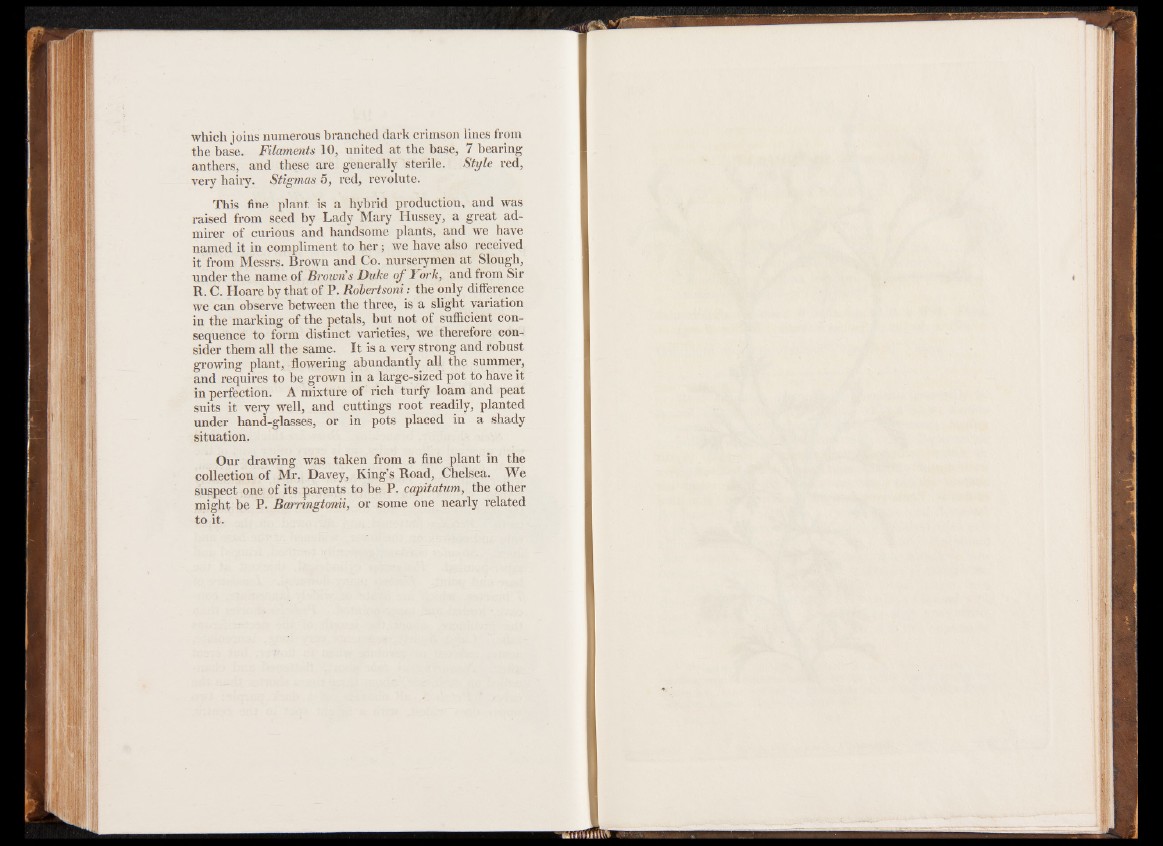
which joins numerous branched dark crimson lines from
the base. Filaments 10, united at the base, 7 bearing
anthers, and these are generally sterile. Style red,
very hairy. Stigmas 5, red, revolute.
This fine plant is a hybrid production, and was
raised from seed by Lady Mary Hussey, a great admirer
of curious and handsome plants, and we have
named it in compliment to it from Messrs. Brown and hCeor. ; nwures ehrayvme eanls aot rSecloeuivgehd,
under the name of Browns Duke of York, and from Sir
wRe. Cc.a Hn ooabrsee rbvye tbheattw oefe Pn. tRhoe btehrrteseo,n ii:s tah es loinglhyt dviaffreiaretinocne
in the marking of the petals, but not of sufficient consseidqeure
nthceem t oa llf otrhme sdaimstein. ct Itv aisri aet iveesr,y wster otnhge raenfodr ero cbounst
ganrodw rienqgu iprelas ntto, bfleo wgreorwinng ianb au nladragnet-lsyi zaeldl pthoet tsou hmamvee irt,
in perfection. A mixture of rich turfy loam and peat
suits it very well, and cuttings root readily, planted
under hand-glasses, or in pots placed in a shady
situation.
Our drawing was taken from a fine plant in the
collection of Mr. Davey, King’s Road, Chelsea. We
suspect one of its parents to be P. capitatum, the other
might be P. Barringtonii, or some one nearly related
to it.